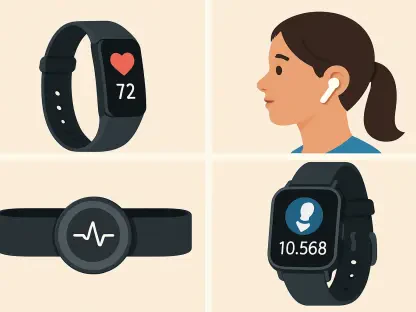Virtual reality gaming has seen exponential growth over the past few years, and 2025 is no exception. With numerous advancements in technology, VR headsets have become more immersive, comfortable, and versatile than ever before. This article delves into the top five VR headsets of 2025, comparing their features, strengths, and unique value propositions to help you determine which one offers the best gaming experience.
Technological Breakthroughs in VR Headsets
Display and Visual Quality
The latest VR headsets in 2025 showcase significant improvements in display technology. From 4K+ resolutions to OLED HDR displays, these devices provide stunningly realistic visuals that enhance the gaming experience. One of the most notable advancements can be seen in the Pimax Crystal, a headset renowned for its ultra-high resolution. This device minimizes the notorious screen-door effect, presenting users with a clear, immersive visual experience that feels almost lifelike. The result? An environment where gamers can lose themselves without the distraction of visible pixels, thus enhancing the overall sense of presence in the virtual world.
Other headsets, like the PlayStation VR2, also contribute to this trend with their high-quality OLED HDR displays. These screens manage to deliver vibrant colors and deep blacks, creating a more dynamic and engaging visual experience. The enhanced field of view in many of these devices further complements the advanced display technology, expanding the peripheral vision to make virtual environments appear more realistic. Whether battling enemies or exploring new worlds, these technological breakthroughs ensure that gamers feel as if they are stepping into another reality.
Motion Tracking and Processing Power
Motion tracking and processing power are crucial for a seamless VR experience. The headsets reviewed in 2025, such as the Oculus Quest 3 and Meta Quest Pro, feature advanced motion tracking and powerful chipsets that set new standards for virtual reality. The Snapdragon XR2+ chipset, for instance, powers the Oculus Quest 3, providing it with the capability to deliver smooth and responsive gameplay. This level of performance translates to a more immersive and engaging virtual environment, where latency and lag are minimized, and actions feel natural and immediate.
A standout in this category is the Meta Quest Pro, which not only boasts superior processing power but also incorporates sophisticated mixed reality capabilities. With its advanced motion tracking, the Meta Quest Pro allows for precise and accurate movements within virtual spaces, making interactions more believable. Additionally, the increased processing power supports richer graphics and more complex simulations, elevating the overall gaming experience. These technological advancements collectively push the boundaries of what VR gaming can achieve, ensuring that users are met with unparalleled performance and fluidity.
Catering to Different Gaming Platforms
Standalone and Console-Compatible Headsets
The VR market in 2025 offers headsets tailored to various gaming setups, catering to a wide range of preferences and needs. The Oculus Quest 3, for instance, is a standout as a standalone device, providing wireless freedom and ease of use. Ideal for gamers who prioritize portability, this headset does not require a PC or external sensors, offering a high-quality VR experience that is both accessible and user-friendly. Its wireless nature allows for unrestricted movement, making it perfect for living room setups and on-the-go gaming sessions.
On the other hand, the PlayStation VR2 is designed specifically for PlayStation 5 users. This headset offers exclusive games and high-quality visuals that enhance the console gaming experience, making it an excellent choice for those invested in the PlayStation ecosystem. Titles such as Horizon Call of the Mountain and Gran Turismo 7 VR highlight the strong lineup of exclusive content that makes the PlayStation VR2 a top choice for console gamers. The integration with the PS5 ensures that users can seamlessly transition between traditional and virtual gaming, broadening the scope of entertainment possibilities.
High-End PC Gaming
For gamers who prefer high-end PC setups, headsets like the Pimax Crystal and Meta Quest Pro deliver superior performance and visual quality. These devices cater to users who demand cutting-edge technology and are willing to invest in a premium VR experience. The Pimax Crystal, in particular, boasts ultra-high-resolution displays that provide an exceptionally clear visual experience, making it a favorite among simulation gamers and VR enthusiasts. This headset’s advanced optics and minimal screen-door effect create an immersive environment where every detail is crisp and lifelike.
The Meta Quest Pro also stands out in this category, offering high-fidelity optics and advanced mixed reality capabilities. Its superior processing power and sophisticated features make it ideal for both gaming and professional use, accommodating users’ diverse needs. Whether navigating complex virtual environments or using it for productivity applications, the Meta Quest Pro excels in delivering a top-tier experience. For those looking to push the boundaries of virtual reality, these headsets represent the pinnacle of what’s available, ensuring that high-end PC gamers have access to the best technology on the market.
Enhanced Immersion Features
Haptic Feedback and Eye Tracking
Immersion is a key factor in VR gaming, and the headsets of 2025 have made significant strides in this area. Features like haptic feedback and eye tracking enable more lifelike interactions within virtual environments. The PlayStation VR2, for instance, incorporates eye-tracking technology that allows games to respond in real time to where players are looking, creating a more intuitive and engaging experience. Additionally, haptic feedback built into the headset and controllers simulates real-world sensations, making the virtual experience feel more tangible.
These technologies contribute to a heightened sense of presence within the virtual environment. When players feel the distinct vibrations of a controller as they interact with objects or experience the subtle shifts in weight and resistance, the boundary between the real and virtual worlds blurs. This level of immersion is pivotal in creating engaging and realistic gameplay experiences, ensuring that players are consistently drawn deeper into the game. With further advancements expected, haptic feedback and eye tracking promise to redefine how players interact with and experience VR games.
Hand Tracking and Comfort
Improved hand tracking and ergonomic designs contribute to longer, more comfortable play sessions. The Oculus Quest 3, for example, offers enhanced hand tracking capabilities that allow for more precise and natural interactions within the virtual environment. Coupled with its lightweight and comfortable design, this ensures that gamers can enjoy extended periods of gameplay without experiencing discomfort or fatigue. The HTC Vive XR Elite also excels in this area, featuring advanced hand tracking and an ergonomic build that makes it suitable for long-term use.
Comfort is a crucial aspect of any VR experience, as extended play sessions can often lead to physical strain. By focusing on ergonomic designs and lightweight materials, headset manufacturers have made significant progress in making VR more accessible and enjoyable for all users. The improvements in hand tracking further enhance this experience, allowing for more intuitive and immersive interactions that feel natural and accurate. As a result, gamers can fully immerse themselves in virtual worlds without the distraction of physical discomfort, enhancing the overall VR experience.
Versatility and Multi-Use Capabilities
VR and AR Integration
Some of the top VR headsets in 2025, such as the HTC Vive XR Elite, offer both VR and AR capabilities. This hybrid approach provides versatility, allowing users to switch between immersive gaming and practical applications seamlessly. The modular design of the HTC Vive XR Elite makes it suitable for a range of activities, from gaming to productivity. By integrating virtual and augmented reality features, these headsets can cater to a broader audience, providing value beyond just gaming.
The ability to seamlessly transition between VR and AR modes opens new possibilities for users, enabling them to utilize the technology in diverse settings. Whether overlaying digital information onto the real world for practical applications or fully immersing oneself in a virtual environment for gaming, the dual capabilities of these headsets provide unmatched versatility. This integration of VR and AR technology allows for a more dynamic and adaptable user experience, ensuring that the devices remain relevant and valuable across various use cases.
Target Audience and Use Cases
Virtual reality gaming has experienced tremendous growth recently, and 2025 continues this trend. Thanks to significant technological advancements, VR headsets nowadays offer breathtakingly immersive experiences while ensuring greater comfort and versatility. The headsets available today have set the bar exceedingly high, offering gamers unmatched levels of realism and engagement.
This article explores the top five VR headsets of 2025, examining their various features, strengths, and unique value propositions. By diving into these comparisons, you can make an informed decision on which headset will deliver the ultimate gaming experience tailored to your preferences. From enhanced graphics and wider field-of-view to advanced motion tracking and ergonomics, each of these VR devices brings something distinctive to the table. Whether you’re a seasoned gamer or a VR novice, understanding the differences and advantages of each model will guide you to the perfect choice for an exceptional virtual reality experience.









